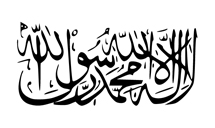Executive Summary:
The Islamic Movement of Uzbekistan (IMU) is an internationally designated terrorist organization founded in 1998 with the goal of overthrowing the Uzbek government and replacing it with an Islamic state. The IMU long pledged its allegiance to al-Qaeda and the Taliban, but in 2015, the group’s emir and most of its fighters publicly shifted their affiliation to ISIS. Dissident factions, however, continued to assert fidelity to their longstanding patrons.
The group was created in Afghanistan, receiving sanctuary from the Taliban government, and was initially based in Afghanistan, Tajikistan, and Kyrgyzstan. The group received support early on from the Taliban and reportedly from Pakistan’s Inter-Services Intelligence agency as well. The IMU has attracted recruits from Central Asia, South Asia, Europe, Africa, China, Russia, and the Philippines.
The IMU has conducted attacks across the region, targeting both civilians, community leaders, and security forces in Uzbekistan, Tajikistan, Kyrgyzstan, Afghanistan, and Pakistan. These attacks include kidnapping, suicide bombings, and other operations coordinated with the Taliban, al-Qaeda, Tehrik-i-Taliban Pakistan (TTP), and later ISIS.
After the U.S.-led war against al-Qaeda and the Taliban in Afghanistan commenced in 2001, the IMU shifted its focus to fighting alongside the Taliban against NATO and Afghan government forces. The group suffered heavy losses fighting U.S. forces, including the death of its cofounder and emir, Juma Namangani. The group consequently retreated in 2002 to South Waziristan in Pakistan’s Federally Administered Tribal Areas (FATA). Internal disputes led to a split within the IMU and a small splinter faction, the Islamic Jihad Union (IJU), formed in the FATA. In 2009, the IMU’s other cofounder, Tahir Yuldashev, was killed by a U.S. drone strike, while another strike killed his successor, Abu Usman, in 2011. Thus, by the end of 2011, all of the IMU’s original leadership and most original members had been killed, and the group struggled to maintain operational and recruitment ties to Uzbekistan.
Between 2010 and 2013, the IMU focused its recruitment efforts on the Uzbek and Tajik populations in northern Afghanistan, from which the NATO-led coalition forces had recently withdrawn. Coalition forces carried out six anti-IMU raids in the first quarter of 2012, including three in these northern provinces. However, all but one of the 12 anti-IMU raids conducted in the first quarter of 2013 occurred in this region, emphasizing the IMU’s expanded presence here. General Zalmai Wesa, 209th Afghan National Army Corps commander in the north, stated in April 2013 that “IMU fighters are the main focus of our special forces operations. They are all over north-eastern Afghanistan [where] they train locals in IEDs, suicide attacks and other sophisticated attacks and are behind the assassination of a number of officials and tribal elders.”
The IMU publicly allied with ISIS in September 2014 and the IMU’s then-leader, Usman Ghazi, formally swore allegiance to the latter in August 2015. The Taliban demanded that the IMU disclaim its oath of allegiance to ISIS or leave Afghanistan. Subsequently, several IMU members reaffiliated with the Taliban, but Ghazi and others rejected the ultimatum and remained in Afghanistan. The Taliban then launched a major military campaign against IMU strongholds, killing Ghazi and largely wiping out the group.
A January 2017 United Nations report stated that the IMU continues to fight in northern Afghanistan, with some splinter groups attempting to spread into Central Asian states. However, analysts believe the group operates at only a fraction of its past strength and no longer poses a serious threat to regional stability.
Doctrine:
IMU cofounder Tahir Yuldashev is considered the group’s spiritual founder and was a local mullah in Namangan, Uzbekistan. In 1990, he and his followers were members of the Islamic Renaissance Party (I.R.P.) but they quickly left it and formed the Adolat party, claiming that the I.R.P. was too slow to implement an Islamic revolution. The Uzbek government outlawed Adolat in 1992 following increased militancy within the group and initiated a brutal crackdown of its supporters. Yuldashev and Namangani fled to Tajikistan, where Namangani led a group of Uzbek and Tajik militants—many of whom were former Adolat members—against the Tajik government.
Upon its founding in 1998, the IMU claimed that its main goal was to overthrow the Uzbek government and replace it with an Islamic state. The group changed its name in April 2001 to “the Islamic Party of Turkestan” as its territorial ambitions grew to establish a caliphate across all of Central Asia and even Muslim-majority provinces of China. However, after IMU cofounder Juma Namangani swore allegiance to the Taliban’s Mullah Omar in 2001, the group has focused its fighting against the United States, NATO, and later Taliban targets in Afghanistan and Pakistan, and largely has not carried out attacks in Uzbekistan.
The IMU had deep ties to the Islamic extremist Lal Mosque in Islamabad, Pakistan. Yuldashev said in 2007 that:
We consider them [Lal Masjid] a part of us before, during and after the [siege]… their shaheed are our shaheed... their prisoners are our prisoners.... every member of the Harakat [i.e. IMU] will stand up against the terrorist act that took place on Lal Masjid. ... After Iraq and Afghanistan, Pakistan ranks 3rd in the کاروای جہادی (“jihadi operations”) launched on its territory. We will always be a part of these activities.
The Lal Mosque was infamous for its militant activism, including facilitating the transport of foreign fighters to Afghanistan, kidnapping prostitutes, ransoming police officers, and supporting violent anti-Shia groups. Following the Pakistan security forces’ violent siege of the Lal Mosque in July 2007, the IMU released two videos showing its fighters executing Pakistani soldiers.
The IMU sided with ISIS in its fight against the Taliban in September 2014, fully pledging allegiance to the organization in August 2015. Following this, the Taliban launched a major military campaign against IMU strongholds, killing its emir and largely wiping out the group.
Organizational Structure:
The IMU originally consisted mostly of Uzbeks and was led by a military leader, Juma Namangani, and a spiritual leader, Tahir Yuldashev. The organization set up training camps in northern Afghanistan in the late 1990s, from where it carried out attacks in Uzbekistan and Kyrgyzstan. The Taliban also allowed the group to open political offices in Kabul, Kandahar, and Mazar-e-Sharif to aid recruitment.
After NATO invaded Afghanistan following the September 11, 2001, attacks, the IMU suffered heavy losses fighting against U.S. forces, including the death of Namangani. The group consequently retreated in 2002 to South Waziristan in Pakistan’s Federally Administered Tribal Areas (FATA). Internal disputes led to a split within the IMU and a small splinter faction, the Islamic Jihad Union (IJU), formed in the FATA. In 2009, the IMU’s other cofounder, Tahir Yuldashev, was killed by a U.S. drone strike, and another strike killed his successor, Abu Usman, in 2011. Thus, by the end of 2011 all of the IMU’s original leadership and most original members had been killed, and the group struggled to maintain operational and recruitment ties to Uzbekistan. Following Yuldashev’s death in 2009, a Bangladeshi sheikh became the group’s new spiritual leader.
After pledging allegiance to ISIS in 2015, the IMU lost an estimated 90 percent of its strength in southern Afghanistan to sustained Taliban attacks. It is estimated that the group retained 200-300 fighters in northern Afghanistan, including men from Africa, Uzbekistan, Tajikistan, Pakistan, the Philippines, Bangladesh, and China that fight alongside ISIS. IMU Emir Usman Ghazi was killed in fighting against the Taliban and the group has not publicly named a successor.
Financing:
The IMU has financially supported itself both through external fundraising and participation in black-market economies. According to the Australian government, Uzbek expats in Saudi Arabia, Turkish foundations, Islamist and pan-Turkic organizations, and like-minded Arab foundations and banks have been crucial sources of revenue for the group. The IMU also received financial support from the Taliban and al-Qaeda from its founding until 2014, when it switched its allegiance to ISIS.
The IMU has also resorted to illegal financing, including drug trafficking and racketeering. Ten Europeans were arrested in May 2008 for operating a network funneling at least 300,000 euros to the IMU in Uzbekistan, Afghanistan, and Pakistan. On January 8, 2013, French authorities sentenced Irfan Demirtas, a Turkish-Dutch national charged with leading the network, to eight years in prison. In August 2015, Fazliddin Kurbanov, an Uzbek national, was sentenced to 25 years’ imprisonment in the United States after being found guilty of attempting to provide material support to the IMU, as well as seeking to obtain bomb-making materials in order to carry out attacks on the United States.
Recruitment:
The group has successfully exploited the widespread poverty of the Ferghana Valley—a region bordering Uzbekistan, Kyrgyzstan, and Tajikistan—to recruit. Initially, most of the IMU’s fighters came from Central Asian countries like Uzbekistan, Tajikistan, and Kyrgyzstan, but also included Chechens and Uighurs. Between 1998 and 2001, the group ran Taliban-approved political offices in Kabul, Kandahar, and Mazar e-Sharif to assist recruitment efforts. In these early years it was reported that Namangani paid IMU members between 100 and 500 U.S. dollars per month, a huge incentive for impoverished men in the region to join.
By the mid-2000s, as Yuldashev established the IMU as the most powerful non-Arab regional group supportive of al-Qaeda, the organization was able to expand its recruitment base to include Turkmen, Turks, Afghans, Pashtun and non-Pashtun Pakistanis, Arabs, Chinese, Germans, Norwegians, and Russians. The group has particularly targeted Germans, including via German-language recruitment videos displaying attacks on Pakistani forces and inviting prospective German fighters and their families to leave Germany to go to the IMU’s base in Pakistan’s tribal areas. In 2011, German authorities suspected the IMU of operating the largest militant recruitment network inside the country. The German Federal Office of Criminal Investigation confirmed that as of 2010, nearly 100 individuals joined militant groups in the Afghanistan-Pakistan region. However, after most of the group was killed in fighting against the Taliban in late 2015, recruitment efforts were significantly harmed, as potential recruits instead traveled to Syria to join new Uzbek and Central Asian jihadist organizations fighting against the Assad regime.Much of the IMU’s remaining membership consists of men from Africa, Pakistan, the Philippines, Bangladesh, China, Uzbekistan, and Tajikistan that fight alongside ISIS.
Training:
Between 1995 and 1998, IMU cofounder Tahir Yuldashev lived in Peshawar, Pakistan, where he obtained the support of the pro-Taliban Jamiat Ulema Islam Party, which trained his Uzbek followers in their Pakistani madrassas. When the IMU formed in 1998, the Taliban supported the group financially and allowed it to set up training camps in northern Afghanistan, from where it launched attacks against the governments of Uzbekistan and Kyrgyzstan. These Afghan camps used instructors and manuals written in several languages to train members in operating weapons, rigging booby traps, and assembling car bombs.
The IMU has also taken charge of training their allies’ members, with a focus on developing suicide squads. The IMU provides manpower and training to operations planned by these groups, although they do not appear to contribute to strategic planning.














